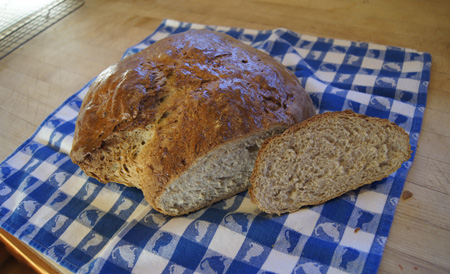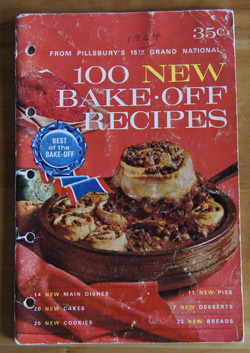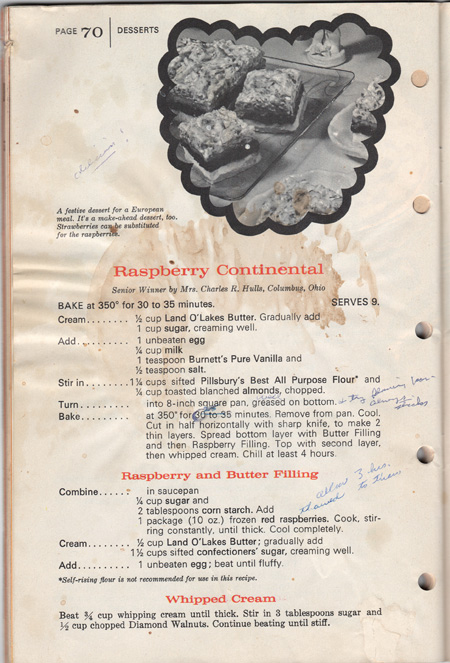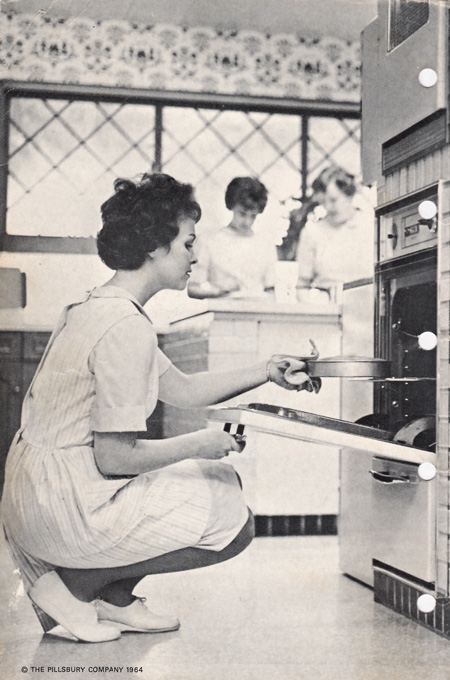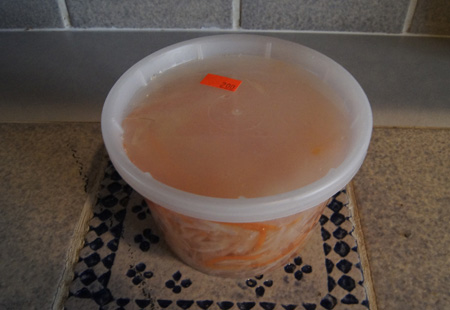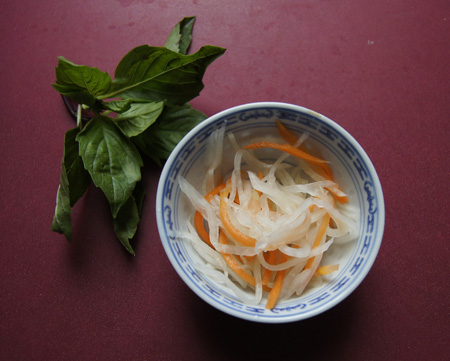Cookbook #8: The New 365 Ways to Cook Hamburger and Other Ground Meat. By Doyne and Dorothy Nickerson, Doubleday & Company, Garden City, NY, 1983.
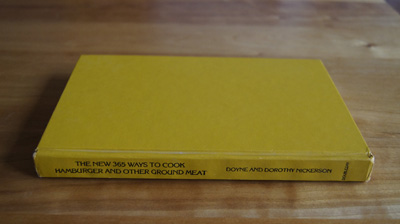 I think this book used to have a cover leaf, without it it looks so plain. But it is a plain little book. There aren’t any photos inside, although there are some pleasant drawn illustrations. The recipes are pretty plain too. Why did I buy it? Dunno. Guess I wanted hamburger ideas.
I think this book used to have a cover leaf, without it it looks so plain. But it is a plain little book. There aren’t any photos inside, although there are some pleasant drawn illustrations. The recipes are pretty plain too. Why did I buy it? Dunno. Guess I wanted hamburger ideas.
I don’t think I ever cooked anything from this book, although I had marked several pages. Those pages were for . . . meatballs! I am a huge fan of meatballs. I could eat meatballs once a week. They are right up there among my top comfort foods. I guess I already hinted at that when I chose to make the Pork Balls from cookbook #6. I like mushing the meat with the spices and egg, I like forming the meatballs, I love the aroma as they sizzle and cook in the pan. And I like the convenience of making extra, freezing them, and popping them into a sauce later for a quick meal. Oh, and I like stealing one as they sit on the counter to cool—hey, it’s important to taste them to make sure they are good!
The only recipe in this book I marked besides the ones for meatballs is one for gnocchi. I’ve tried several times in my life to make gnocchi from scratch, but nowadays I use the shelf-packaged product that you can find in most grocery stores.
Do I like this cookbook? It’s okay, but doesn’t have very many innovative ideas, nor are there commentaries to personalize the 365 recipes. The original publication date was 1958 and today, the recipes seem tired. Grilled hamburgers, skillet dishes, baked casseroles, soups, spaghetti meat sauce, tacos (with no seasoning other than salt), meat pies. If you have a hankering for a nostalgic hamburger pie with crescent rolls on top, this is your cookbook. It’s mostly basic hamburger cooking, the kind of cooking that doesn’t require a recipe. I could give this cookbook away and never miss it.
I chose German Meatballs, one of the recipes that I had marked years ago. I’m not sure if I tried this recipe before, but I doubt it because the cookbook is free of food stains and I didn’t write anything on the recipe. This recipe interests me because the onion is cooked before it’s added to the hamburger, there is white wine in the meatballs, the eggs are separated and the whites stiffly beaten. (I doubt that this will make the meatballs much different from ones made with whole, non-beaten eggs, but it’s worth a try.) I like the accompanying sauce, with beer, potatoes and carrots. I don’t have a recipe in my repertoire that is anything like this one. Sounds good for a winter dinner, as I watch the snow fall on a November day in Colorado.
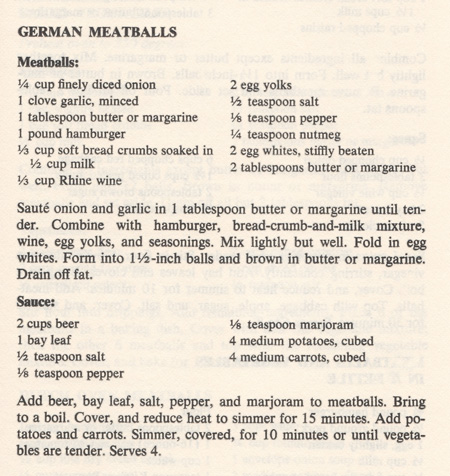
I had some problems cooking these meatballs. I could tell that the uncooked meatball mixture was much more liquid-y than I would normally choose, and sure enough, when I dropped the first couple meatballs into the hot pan, they flattened out like pancakes. Well, the dogs will like those! I added another generous half-cup of breadcrumbs to the meat mixture and that did the trick.
I tasted one of the cooked meatballs and said “yum!” As I had predicted, the high moisture content and egg whites in the meatballs made them light and almost delicate.
For the sauce, I recalled my Beer and Cheese Soup disaster, and substituted half of the beer with beef broth. As the sauce and meatballs and potatoes and carrots simmered together, I added more broth so that they would be covered.
When the vegetables were done, I didn’t know quite how to serve the dish, since the sauce was thin. As written in the cookbook, there is no way this dish could be served over pasta or rice, nor could it be lain on a flat plate, because the “sauce” was just a runny liquid. So I thickened it with a little cornstarch and called it a “soup-stew”. I served it in big bowls with slices of My Daily Bread and cheese. It was really good! The broth suffused the potatoes and carrots with a hint of beer, marjoram, and bay leaf, and the meatballs were just about perfect.
Below is my revised version.
German Meatballs
Meatballs:
- 1/4 cup finely diced onion
- 1 clove garlic, minced
- 1 pound hamburger (I used 90% lean)
- 1 cup soft bread crumbs soaked in 1/2 cup milk
- 1/3 cup white wine
- 2 egg yolks
- 1/2 teaspoon salt (or to personal taste)
- 1/8 teaspoon pepper
- 1/4 teaspoon nutmeg
- 2 egg whites, stiffly beaten
Sauce and vegetables:
- 1 cup beer
- 1 cup beef stock
- 1/4 teaspoon marjoram
- 1 large bay leaf
- 4 medium potatoes, cubed (gauge the amount of potatoes and carrots to your diner’s appetites)
- 4 medium carrots, cubed
- salt and pepper to taste
- 1 1/2 tablespoon cornstarch mixed with a little water or broth
Heat a small amount of oil (olive or vegetable) in a pan and saute the onion, sweating with a little salt, until soft. Add the garlic and cook for 30 seconds more. Combine with the hamburger, bread-crumb-and-milk mixture, wine, egg yolks, and seasonings. Mix lightly but well. Fold in egg whites.
Form into 1-inch balls and brown in a small amount of hot oil. These burn more easily than most meatballs, so watch the heat of the pan and turn the meatballs often. When they are all browned, drain off any fat.
Add the sauce/vegetable ingredients—except the cornstarch mixture—to the meatballs and bring to a boil. Cover, and reduce heat to simmer for 20-30 minutes. If you like, add more broth so that the meat and vegetables stay down in the liquid. This will make it more soup-like.
When the vegetables are tender, slowly and with stirring, add the cornstarch mixture to thicken the sauce. (You can add more cornstarch if you like it thicker.) Taste and adjust salt and pepper to your taste.
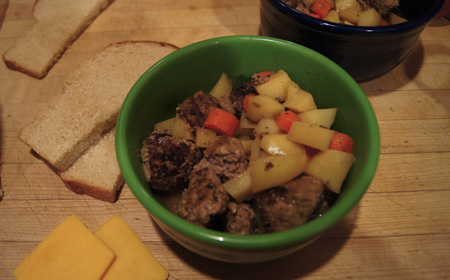 We each finished our German Meatballs and wiped the bowls clean with bread!
We each finished our German Meatballs and wiped the bowls clean with bread!

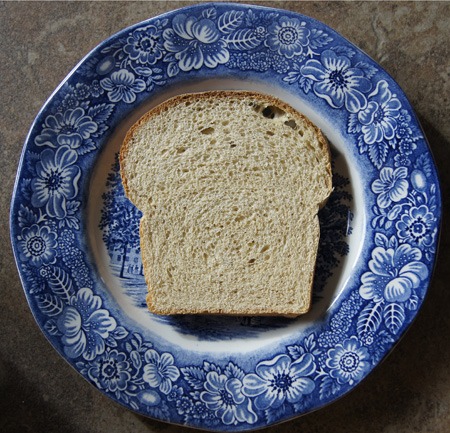
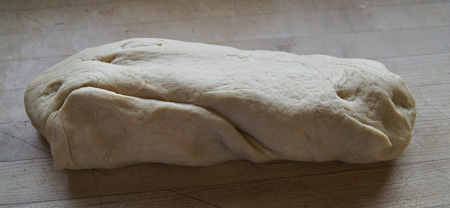
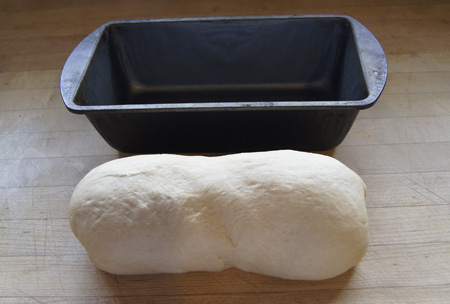
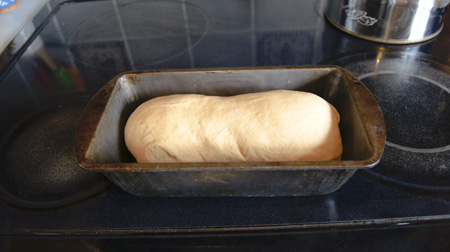
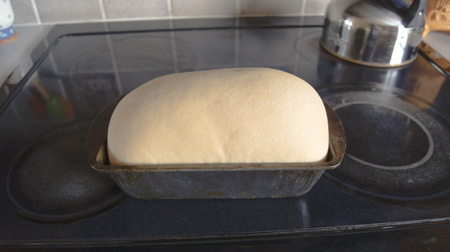
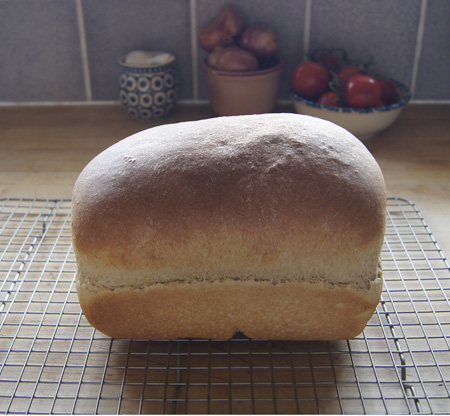
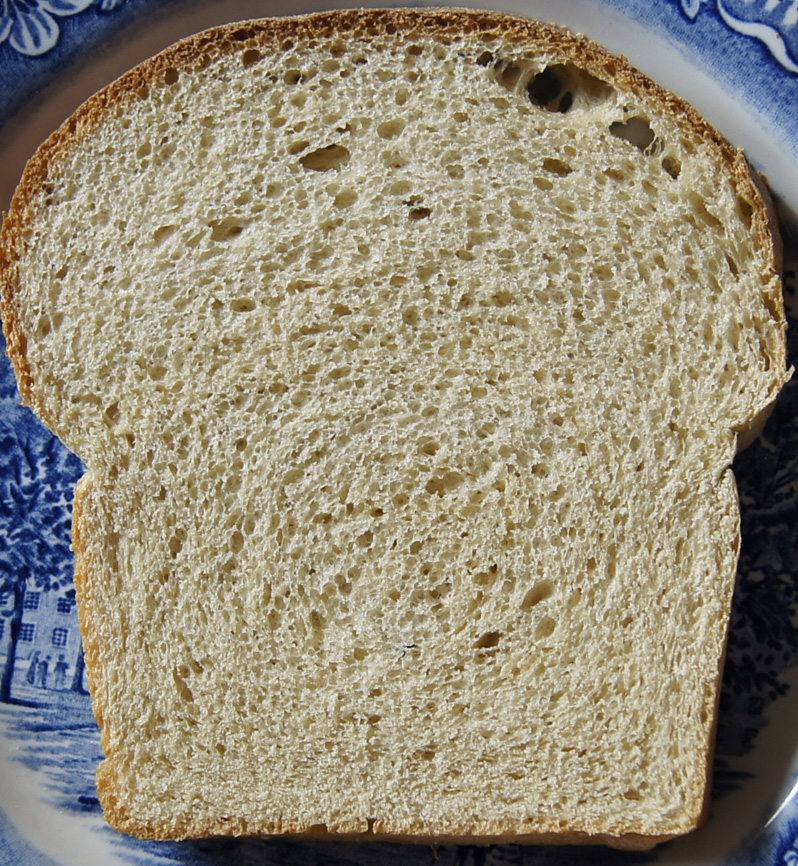
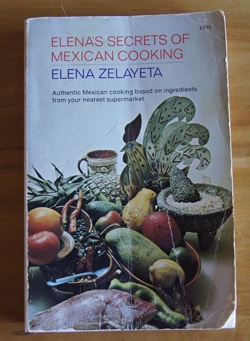 I have been cooking “Mexican” food as long as I can remember. I grew up in Southern California in the 50s, and my mother made tacos, enchiladas, and miscellaneous Mexican-style casseroles quite often. Today I’d classify these as “Tex-Mex” or “Southwestern” cooking rather than true Mexican cooking. They relied heavily on chile powder, green chiles, salsa, taco seasoning packets, onions, bell peppers, sour cream, and lots of jack or cheddar cheese. My own Tex-Mex cooking today is usually put together recipe-free, using past experience to free-form a meal.
I have been cooking “Mexican” food as long as I can remember. I grew up in Southern California in the 50s, and my mother made tacos, enchiladas, and miscellaneous Mexican-style casseroles quite often. Today I’d classify these as “Tex-Mex” or “Southwestern” cooking rather than true Mexican cooking. They relied heavily on chile powder, green chiles, salsa, taco seasoning packets, onions, bell peppers, sour cream, and lots of jack or cheddar cheese. My own Tex-Mex cooking today is usually put together recipe-free, using past experience to free-form a meal.
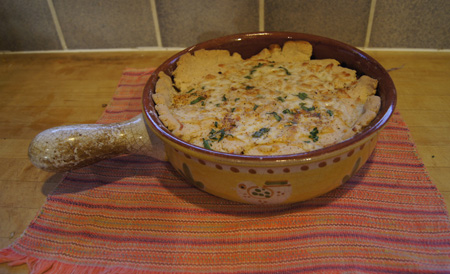
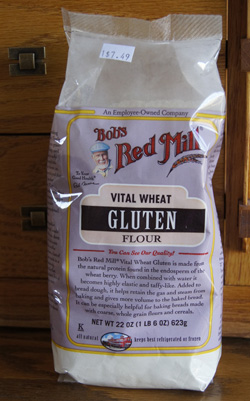 If you are using white flour sold as “bread flour”, it will already have a high gluten content and you do not need to use wheat gluten in a recipe. But if you are using whole grain flour, I strongly suggest adding gluten flour to the loaf. I’ve mixed some wheat gluten in all of my yeast loaves since the 1970s. Back then, I could not find unbleached bread flour, so I used unbleached all-purpose flour and substituted some of the flour with vital wheat gluten. Today I include a third of a cup of wheat gluten per standard loaf of any yeast bread. It looks like any type of white flour, but it sure adds a lot to a loaf.
If you are using white flour sold as “bread flour”, it will already have a high gluten content and you do not need to use wheat gluten in a recipe. But if you are using whole grain flour, I strongly suggest adding gluten flour to the loaf. I’ve mixed some wheat gluten in all of my yeast loaves since the 1970s. Back then, I could not find unbleached bread flour, so I used unbleached all-purpose flour and substituted some of the flour with vital wheat gluten. Today I include a third of a cup of wheat gluten per standard loaf of any yeast bread. It looks like any type of white flour, but it sure adds a lot to a loaf.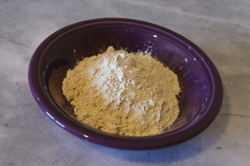
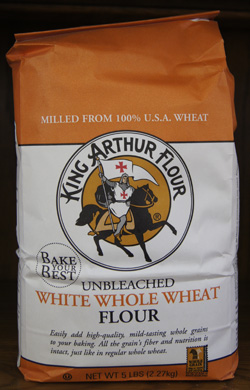 In general, whole grains make a loaf of yeast bread heavy and dense. The “whole” little grains are sharp particles that cut into and burst the bubbles that yeast forms in a rising loaf of bread. White whole wheat flour is great in that it doesn’t seem to pop as many of the bubbles as traditional whole wheat flour, thus lending to a light loaf of bread.
In general, whole grains make a loaf of yeast bread heavy and dense. The “whole” little grains are sharp particles that cut into and burst the bubbles that yeast forms in a rising loaf of bread. White whole wheat flour is great in that it doesn’t seem to pop as many of the bubbles as traditional whole wheat flour, thus lending to a light loaf of bread.
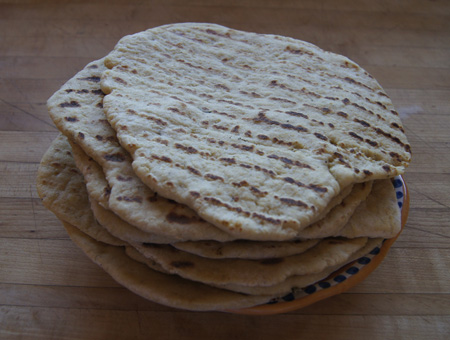
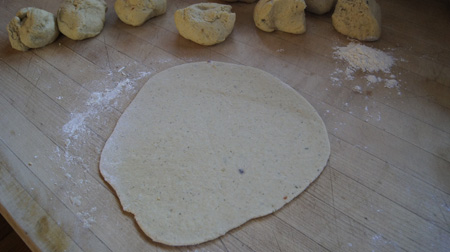
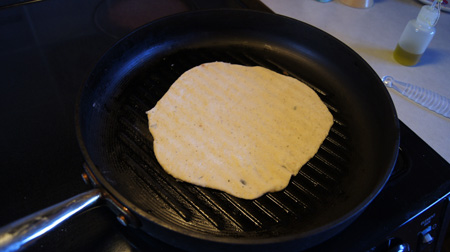 Flip the tortilla and cook the other side. Note the great grill marks!
Flip the tortilla and cook the other side. Note the great grill marks! Continue rolling and cooking until all the tortillas are cooked.
Continue rolling and cooking until all the tortillas are cooked.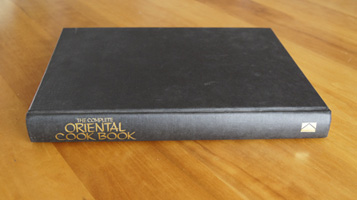
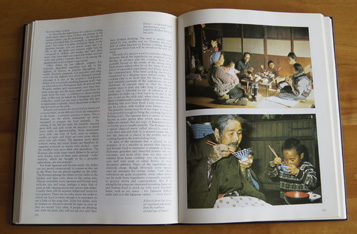
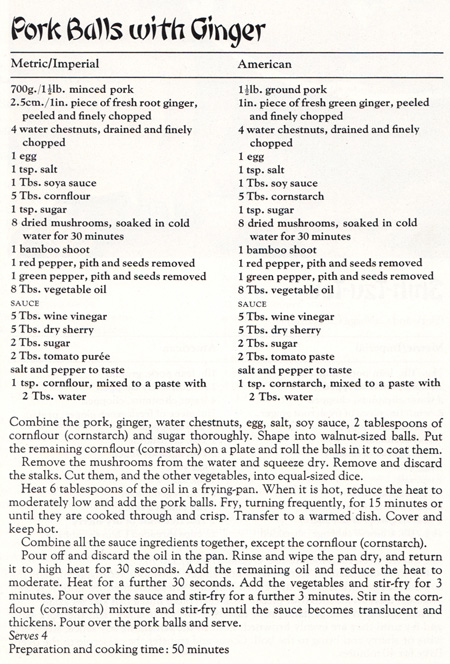
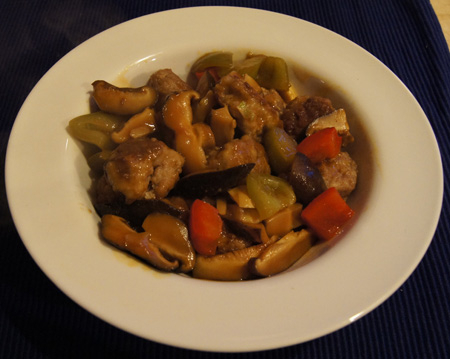
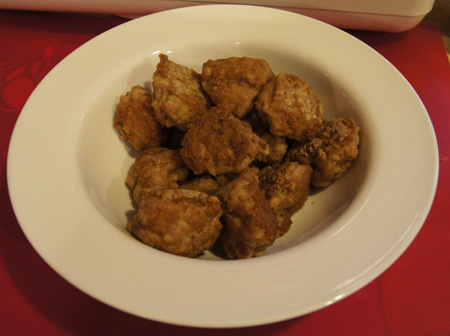


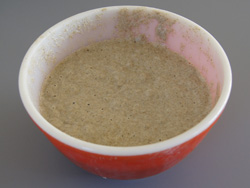
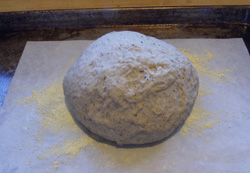
 Brush with the egg wash, and bake in a preheated 375˚ oven for 30 minutes, or until lightly browned and the loaves sound hollow when rapped with the knuckles. Cool, covered with towels to prevent the crust from hardening.
Brush with the egg wash, and bake in a preheated 375˚ oven for 30 minutes, or until lightly browned and the loaves sound hollow when rapped with the knuckles. Cool, covered with towels to prevent the crust from hardening.